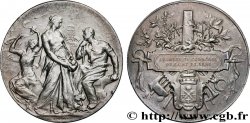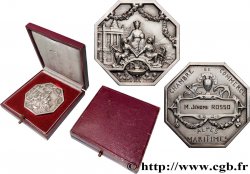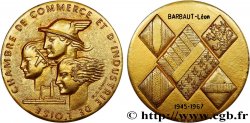Лицевая сторона
Аверс: легенда: LUDOV. XV. REX. CHRISTIANISS.
Аверс: описание: Buste de Louis XV [n° 349] signé R. FILIVS.
Аверс: перевод: Louis XV, roi très chrétien.
Обратная сторона
Реверс: легенда: EX. AEQVO. ET. BONO ; À L'EXERGUE LES. PRIEUR. ET. JUGES - CONSULS. DE. ROUEN . 1772.
Реверс: Описание: La Justice assise de face, tenant les balances et posant un rameau sur un autel fleurdelisé. Sur la base, R. FIL..
Реверс: перевод: Par l'équité et par le bien.
Историческая справка
CHAMBERS OF COMMERCE / CHAMBRES DE COMMERCE
The first chamber of commerce was that of Marseille, created at the end of the 16th century. For Paris, the six corps of merchants and the judge-consuls had a role similar to that of a chamber of commerce: an association of merchants gathered to deliberate on the interests of their city or region and to give their opinion to the government. Colbert legalizes them in 1664 by establishing that each place of commerce will choose two of them to represent them. However, the institution was not really established until the decision of the Council of August 30, 1701, and many chambers of commerce appeared in the 18th century in Lyon, Rouen, Toulouse, Montpellier, Bordeaux, etc. The most important of them is Marseilles which had attributions in all the trade of Levant and was of the department of Foreign Affairs, the others concerned the General control of Finances. Abolished by the Constituent Assembly in 1791, the chambers of commerce were re-established under the Consulate. Since 1832, their recruitment is done by elections, they have become chambers of commerce and industry since 1898, grouped into 21 regional chambers.










 Cообщить об ошибке
Cообщить об ошибке Распечатать страницу
Распечатать страницу Отправить мой выбор
Отправить мой выбор Задать вопрос
Задать вопрос Consign / sell
Consign / sell
 Информация
Информация










